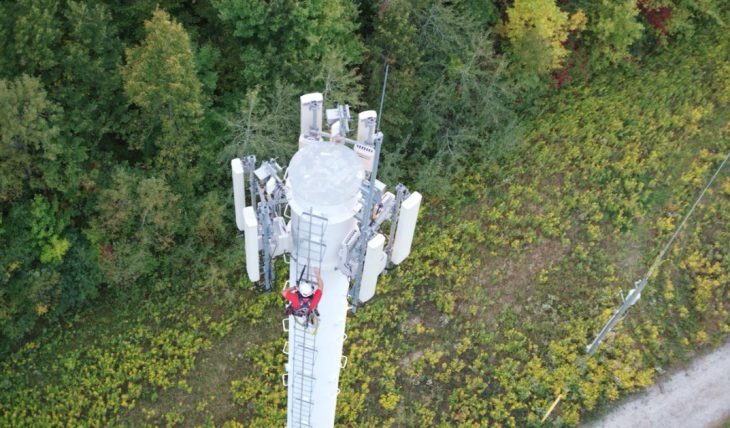
By Ahmad Hathout
Rogers is challenging a decision by the Canada Industrial Relations Board (CIRB) that found it responsible for ensuring the safety of contractor workers following the death of a man working on one of its towers in Minden, Ontario.
The memorandum, filed in the Federal Court of Appeal Friday and that expounds on a notice it submitted earlier this year, challenges the decision that found Rogers was responsible for ensuring the safety of the 30-year-old employee who, in January 2022, fell approximately 400 feet while installing a new antenna near the top of the tower.
The crux of the issue is who should bear responsibility for ensuring safety on tower climbs: the company controlling the workplace (Rogers) or the company controlling the work activity (contractor). The board did not suggest that the death was caused by anything Rogers did or failed to do, nor that the telecom could have prevented the accident, or that the incident was related to the tower or site itself.
Rogers, which has employees on site who don’t climb towers, argues that it provides an industry standard “prequalification program” to ensure that its contractors “who specialize in such work have their own plans for working at heights,” according to its filing. The deceased employee worked for Verrascend Technologies, which was hired by Wesbell Communications, the company that was employed by Rogers to do the work.
CIRB ruled in November 2023 that the head of compliance and enforcement, investigating the incident for Employment and Social Development Canada (ESDC), erred by directing that the cable giant should have had its own fall protection plan in place. The board released its reasons in January 2024, saying Rogers lacked expertise in this area and its prequalification program ensured contractors have a fall protection plan, which was attested to by Wesbell. (The attorney general, representing ESDC, initially brought a court application challenging the decision but later abandoned it after the board released its reasons for why it came to that decision.)
But there was another issue leftover: whether Rogers had to ensure that its contractors followed safety measures on site.
Ruling on Rogers’s appeal on that matter in February 2025, CIRB determined that while Rogers didn’t need to develop a fall protection plan, it was still required by law to “actively” ensure that there was compliance with such plans, and that its prequalification program was insufficient to that end. In other words, “control over the work place is sufficient for the duties to arise,” the board ruled.
“A prequalification program in which a contractor enters information in a questionnaire, without Rogers ever confirming this information, is certainly not an active measure,” the board determined in February. “While Rogers may consider it sufficient to ensure that a contractor meets certain requirements before Rogers contracts with it, it is insufficient to meet its health and safety duties under the Code and the [Canada Occupational Health and Safety Regulations (COHSRs)].”
“Ensuring that a person is familiar with and wears a full body harness and protective headwear does not require Rogers to have expertise in climbing at heights,” the board added. “It is not impossible or an absurdity to require Rogers to ensure that these requirements are met,” which the board determined to be the workers’ use of prescribed protective equipment, including full body harnesses and headgear while climbing distances of approximately 120 metres.
The board specifically noted that Rogers’s procurement team was unaware that Wesbell hired Verrascend for subcontracting work before the incident. Rogers says Verrascend’s crew had “worked extensively for and received training from Wesbell,” and that the deceased was wearing fall protection equipment, including a full body harness and instruction on its use. (The board later said that the deceased’s work colleague – he had two with him that day – was unable to confirm if he had been wearing a helmet, but it also didn’t suggest or argue that he wasn’t.)
Rogers reiterates its position that it simply does not have the expertise for this work and therefore doesn’t have the ability to review or evaluate the quality of its contractors’ plans.
“It makes no sense for such obligations to fall on the owner of the site – especially where the Board has already found that Rogers was not required to develop that expertise and was entitled to use external contractors,” the telecom argues.
Rogers said it has thousands of remote worksites – which the board acknowledged in its February decision – meaning it would have to guarantee its presence at every site when work is being done, periodically checking and verifying compliance before and during work. Notwithstanding its lack of expertise in ensuring safety during tower climbs, the cable giant argues this is practically unrealistic.
“The Board’s interpretation would apply not only to the Minden Tower, but all of Rogers’ towers and those of other telecommunications companies across the country,” Rogers says. “An obligation on Rogers and all industry players to check periodically for compliance at each remote work site before and while tower-climbing work is taking place – including ensuring the workers on site ‘had this equipment and generally used it’ – would be unworkable. It is an unreasonable interpretation of the Code.”
Rogers wants the court to quash the directions from the board or send them back down for redetermination.
Photo via Rogers



